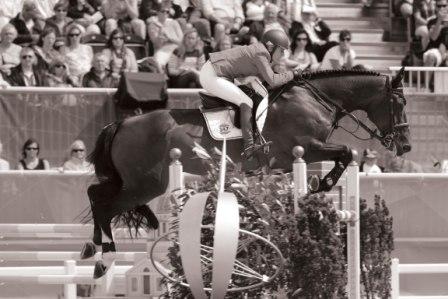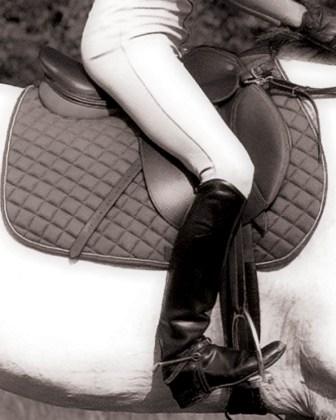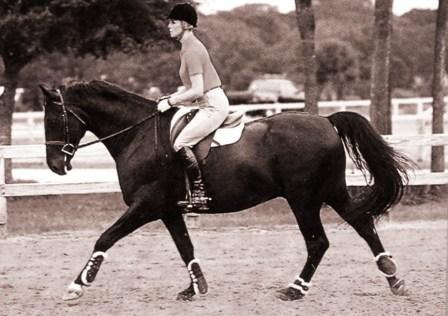Training Tips Seat & Balance
By Khaled Assem
Photo: © HT & Cymon Taylor
(No part of this article may be copied or reproduced in any form without the permission of HT)
A HORSE WILL PERFORM WITH CONFIDENCE WITH AIDS AND BALANCE THAT ARE HARMONIOUS WITH HIS MOTION. A STILL LOAD IS A LIGHT LOAD. THE HORSE’S BALANCE CHANGES WITH THE RIDER’S WEIGHT DISTRIBUTION WHICH CAN EITHER HELP MAINTAIN OR CAUSE A LOSS OF BALANCE.
In show jumping, the point of most concern on the rider’s part has to do with the abrupt shifting in weight - i.e. centre of gravity - which creates a disturbance in the natural movement of the horse and, accordingly, a disturbance in his natural balance.
The seat of the rider has to stay in harmony with the horse’s movement by keeping the rider’s centre of gravity in line with that of the horse. The light seat created by the rider is based upon the concept of his weight being taken through the legs on a three-point suspension system that provides flexibility in lowering the centre of gravity. Those three points are the hip joints, the knee joints, and the ankle joints. The low centre of gravity provides a more compact and stable unity with the horse.
This combined centre of gravity of the horse and rider is approximately 10% higher than the horse’s own centre of gravity. That proportional disturbance of additional weight on the horse’s front and hind legs should not affect the horse’s movement, so long as the rider’s weight is taken through the legs with some weight dispersed inwardly through the contact of the leg and the rest on the stirrups. So as far as the horse can feel, the rider’s weight is just behind his withers along the same vertical line.
The opening and closing of the rider’s joints, not only provide balance, but minimise the movement of the head where the rider’s “sense” of balance is “felt”. This security can only be maintained with the correct length of the stirrup leather keeping the lower leg perpendicular to the ground. During the jump the hip and knee joints need to open on both ascent and descent altering the angle of the body, allowing the horse to rotate around the rider’s knees. It is also necessary to maintain a good and natural alignment of the spine. HT
About the author:
Khaled Assem is a certified Level 2 FEI trainer. He has been training for 15 years, competing internationally for 10 years and locally for 25 years.
--Ends--






